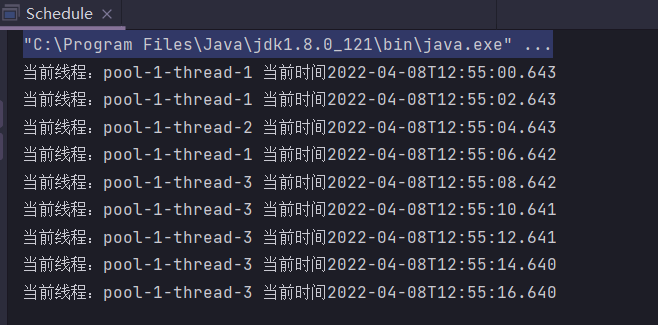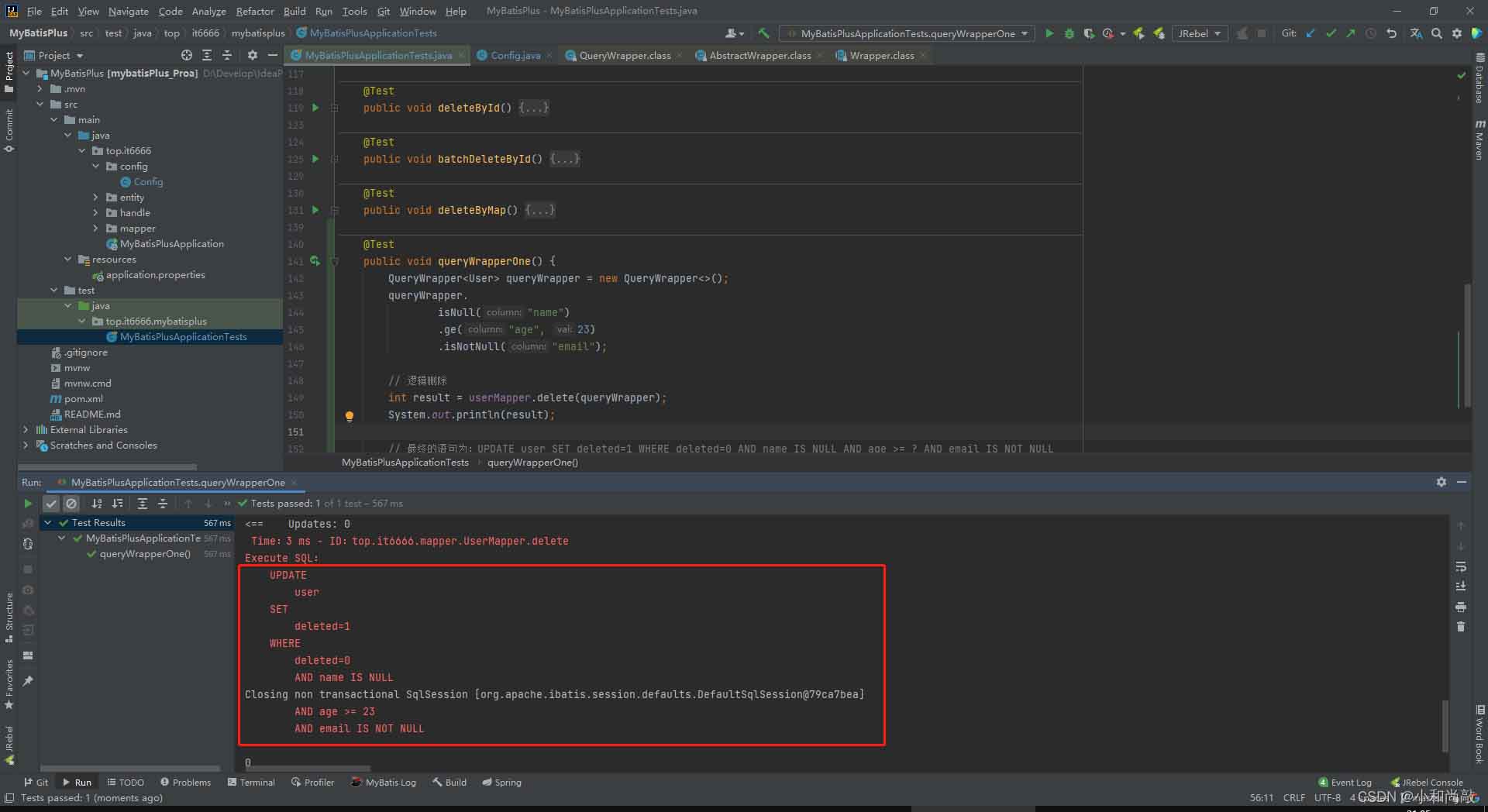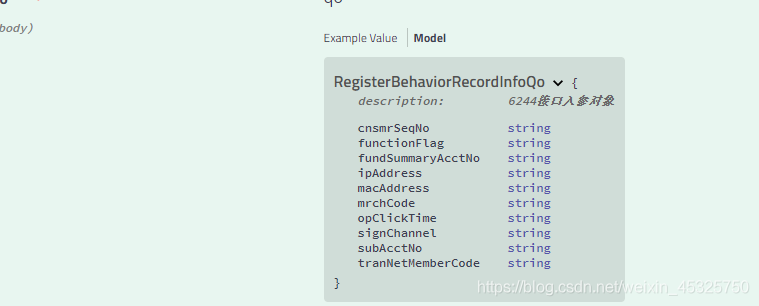首先,我们复习一下InputStream read方法的基础知识,java InputStream read方法内部有一个,postion,标志当前流读取到的位置,每读取一次,位置就会移动一次,如果读到最后,InputStream.read方法会返回-1,标志已经读...
首先,我们复习一下InputStream read方法的基础知识,
java InputStream read方法内部有一个,postion,标志当前流读取到的位置,每读取一次,位置就会移动一次,如果读到最后,InputStream.read方法会返回-1,标志已经读取完了,如果想再次读取,可以调用inputstream.reset方法,position就会移动到上次调用mark的位置,mark默认是0,所以就能从头再读了。
当然,能否reset是有条件的,它取决于markSupported,markSupported() 方法返回是否可以mark/reset
我们再回头看request.getInputStream
request.getInputStream返回的值是ServletInputStream,查看ServletInputStream源码发现,没有重写reset方法,所以查看InputStream源码发现marksupported 返回false,并且reset方法,直接抛出异常。
InputStream.java
public boolean markSupported() {
return false;
}
public synchronized void reset() throws IOException {
throw new IOException("mark/reset not supported");
}
综上所述,在request.getinputstream读取一次后position到了文件末尾,第二次就读取不到数据,由于无法reset(),所以,request.getinputstream只能读取一次。
总结:
这个问题最根本还是对java IO的read、reset方法的深入理解,尤其是read方法的内部实现原理。
附ServletInputStream.java源码
/*
* Licensed to the Apache Software Foundation (ASF) under one or more
* contributor license agreements. See the NOTICE file distributed with
* this work for additional information regarding copyright ownership.
* The ASF licenses this file to You under the Apache License, Version 2.0
* (the "License"); you may not use this file except in compliance with
* the License. You may obtain a copy of the License at
*
* http://www.apache.org/licenses/LICENSE-2.0
*
* Unless required by applicable law or agreed to in writing, software
* distributed under the License is distributed on an "AS IS" BASIS,
* WITHOUT WARRANTIES OR CONDITIONS OF ANY KIND, either express or implied.
* See the License for the specific language governing permissions and
* limitations under the License.
*/
package javax.servlet;
import java.io.IOException;
import java.io.InputStream;
/**
* Provides an input stream for reading binary data from a client request,
* including an efficient <code>readLine</code> method for reading data one line
* at a time. With some protocols, such as HTTP POST and PUT, a
* <code>ServletInputStream</code> object can be used to read data sent from the
* client.
* <p>
* A <code>ServletInputStream</code> object is normally retrieved via the
* {@link ServletRequest#getInputStream} method.
* <p>
* This is an abstract class that a servlet container implements. Subclasses of
* this class must implement the <code>java.io.InputStream.read()</code> method.
*
* @see ServletRequest
*/
public abstract class ServletInputStream extends InputStream {
/**
* Does nothing, because this is an abstract class.
*/
protected ServletInputStream() {
// NOOP
}
/**
* Reads the input stream, one line at a time. Starting at an offset, reads
* bytes into an array, until it reads a certain number of bytes or reaches
* a newline character, which it reads into the array as well.
* <p>
* This method returns -1 if it reaches the end of the input stream before
* reading the maximum number of bytes.
*
* @param b
* an array of bytes into which data is read
* @param off
* an integer specifying the character at which this method
* begins reading
* @param len
* an integer specifying the maximum number of bytes to read
* @return an integer specifying the actual number of bytes read, or -1 if
* the end of the stream is reached
* @exception IOException
* if an input or output exception has occurred
*/
public int readLine(byte[] b, int off, int len) throws IOException {
if (len <= 0) {
return 0;
}
int count = 0, c;
while ((c = read()) != -1) {
b[off++] = (byte) c;
count++;
if (c == '\n' || count == len) {
break;
}
}
return count > 0 ? count : -1;
}
/**
* Returns <code>true</code> if all the data has been read from the stream,
* else <code>false</code>.
*
* @since Servlet 3.1
*/
public abstract boolean isFinished();
/**
* Returns <code>true</code> if data can be read without blocking, else
* <code>false</code>. If this method is called and returns false, the
* container will invoke {@link ReadListener#onDataAvailable()} when data is
* available.
*
* @since Servlet 3.1
*/
public abstract boolean isReady();
/**
* Sets the {@link ReadListener} for this {@link ServletInputStream} and
* thereby switches to non-blocking IO. It is only valid to switch to
* non-blocking IO within async processing or HTTP upgrade processing.
*
* @param listener The non-blocking IO read listener
*
* @throws IllegalStateException If this method is called if neither
* async nor HTTP upgrade is in progress or
* if the {@link ReadListener} has already
* been set
* @throws NullPointerException If listener is null
*
* @since Servlet 3.1
*/
public abstract void setReadListener(ReadListener listener);
}
以上这篇浅谈request.getinputstream只能读取一次的问题就是小编分享给大家的全部内容了,希望能给大家一个参考,也希望大家多多支持。
本文标题为:浅谈request.getinputstream只能读取一次的问题


基础教程推荐
- JSP 动态树的实现 2023-12-17
- Java中EnvironmentAware 接口的作用 2023-01-23
- 深入理解约瑟夫环的数学优化方法 2024-03-07
- Java编写实现窗体程序显示日历 2023-01-02
- 是否适合从javabean类更新数据库? 2023-11-04
- springboot下使用shiro自定义filter的个人经验分享 2024-02-27
- JavaWeb 实现验证码功能(demo) 2024-04-14
- 使用Java和WebSocket实现网页聊天室实例代码 2024-02-25
- 运用El表达式截取字符串/获取list的长度实例 2023-08-01
- Java+mysql实现学籍管理系统 2023-03-16

















